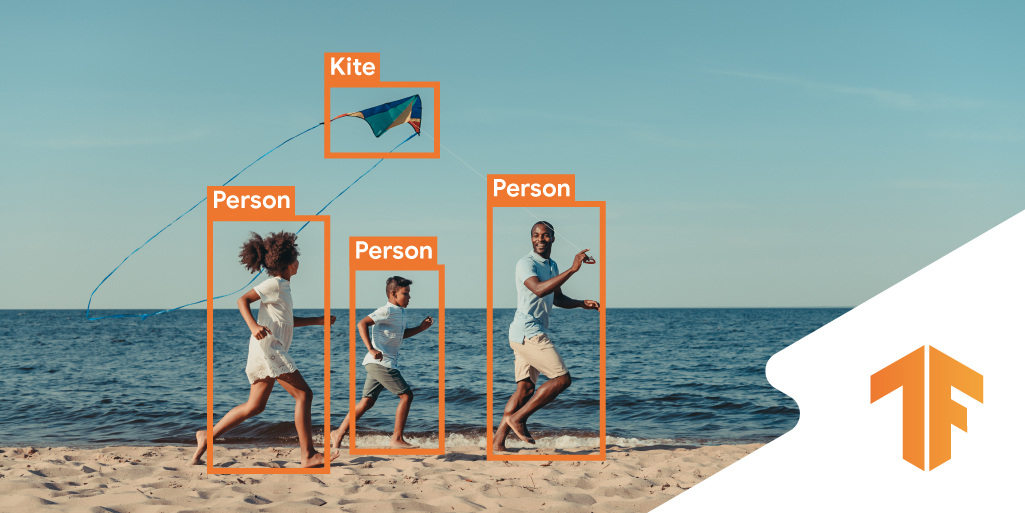📚 TensorFlow 2 meets the Object Detection API
💡 Newskategorie: AI Videos
🔗 Quelle: blog.tensorflow.org
Posted by Vivek Rathod and Jonathan Huang, Google Research
At the TF Dev Summit earlier this year, we mentioned that we are making more of the TF ecosystem compatible so your favorite libraries and models work with TF 2.x. Today we are happy to announce that the TF Object Detection API (OD API) officially supports TensorFlow 2!
Over the last year we’ve been migrating our TF Object Detection API models to be TensorFlow 2 compatible. If you are a frequent visitor to the Object Detection API GitHub repository, you may have already seen bits and pieces of these new models. Our codebase offers tight Keras integration, access to distribution strategies, easy debugging with eager execution; all the goodies that one might expect from a TensorFlow 2 codebase. Specifically, this release includes:
- New binaries for train/eval/export that are eager mode compatible.
- A suite of TF2 compatible (Keras-based) models; this includes migrations of our most popular TF1 models (e.g., SSD with MobileNet, RetinaNet, Faster R-CNN, Mask R-CNN), as well as a few new architectures for which we will only maintain TF2 implementations: (1) CenterNet - a simple and effective anchor-free architecture based on the recent Objects as Points paper by Zhou et al, and (2) EfficientDet --- a recent family of SOTA models discovered with the help of Neural Architecture Search.
- COCO pre-trained weights for all of the models provided as TF2 style object-based checkpoints
- Access to DistributionStrategies for distributed training: traditionally, we have mainly relied on asynchronous training for our TF1 models. We now support synchronous training as the primary strategy; Our TF2 models are designed to be trainable using sync multi-GPU and TPU platforms
- Colab demonstrations of eager mode compatible few-shot training and inference
- First-class support for keypoint estimation, including multi-class estimation, more data augmentation support, better visualizations, and COCO evaluation.
Our philosophy for this migration was to expose all the benefits of TF2 and Keras, while continuing to support our wide user base still using TF1. We believe that there might be many teams out there grappling with similar migration projects, so we thought that a few words about our thought process and approach here might be useful even for non object-detection TensorFlow users.
Users to our codebase now belong to three categories: (1) New users who want to leverage new features (eager mode training, Distribution Strategies) and new models, (2) Existing TF1 users who want to migrate to TF2, and (3) Existing TF1 users who prefer not to migrate just yet. To support all three categories of users, we have followed a number of strategies detailed below:
- Refactor low-level core and meta-architecture to work in both TF1 and TF2. We realized most of our codebase could be shared across TF1 and TF2 (e.g., bounding box arithmetic, loss functions, input pipelines, visualization code, etc); where possible, we’ve tried to ensure that our code is agnostic about whether it is run under TF1 or TF2.
- Treat feature extractors/backbones as being specific to either TF1 or TF2. We continue to maintain our TF1 backbones which are implemented in tf-slim, and introduce TF2 backbones implemented in Keras. Then depending on the version of TensorFlow that a user is running, these models will be either enabled or disabled.
- Leverage community-maintained existing backbone implementations. Instead of re-implementing backbone architectures (e.g. MobileNet or ResNet) in Keras, our models depend on implementations in the Keras applications collection - a set of community-maintained canned architectures. We have also verified that our new Keras backbones maintain or surpass the accuracy of comparable tf-slim backbones (at least for the models that were already in the OD API).
- Increase unit test coverage to cover GPU/TPU, TF1 and TF2. Given that we now need to ensure functionality on multiple platforms (GPU and TPU) as well as across TF versions, we’ve designed a new and flexible unit testing framework that tests OD API functions under all four settings ({GPU, TPU}x{TF1, TF2}), while allowing for certain tests to be disabled (e.g. input pipelines are not tested on TPU)
- Separate front-end binaries (training loops, exporters) for TF1 and TF2. We have added a separate entry point for TF2 models (in the form of new TF2 training and export binaries) which can be run in eager mode, leveraging various DistributionStrategies.
- No changes to the frontend config language. In order to make migration from TF1 to TF2 as easy as possible for our users, we’ve worked hard to ensure that model specifications using OD API’s config language produce equivalent model architectures in both TF1 and TF2 and that models can be trained to the same level of numerical performance under both TF versions. As an example, if you have an existing ResNet-50 based RetinaNet model config that is trainable using TF1 binaries, then to train the same model with TF2 binaries, you would simply change the name of the feature extractor in the config (in this case from
ssd_resnet50_v1_fpntossd_resnet50_v1_fpn_keras); all other hyperparameter specifications would remain unchanged.
As always, please feel free to reach out with questions and feedback via GitHub. We appreciate help from the open source community. In particular, if you are a prior TF1.x user of the TensorFlow Object Detection API and there is a feature that you really like that you don’t see supported in the TF2 pipelines, we encourage you to let us know as this may help us to prioritize as we continue to release features/models.


 800+ IT
News
als RSS Feed abonnieren
800+ IT
News
als RSS Feed abonnieren